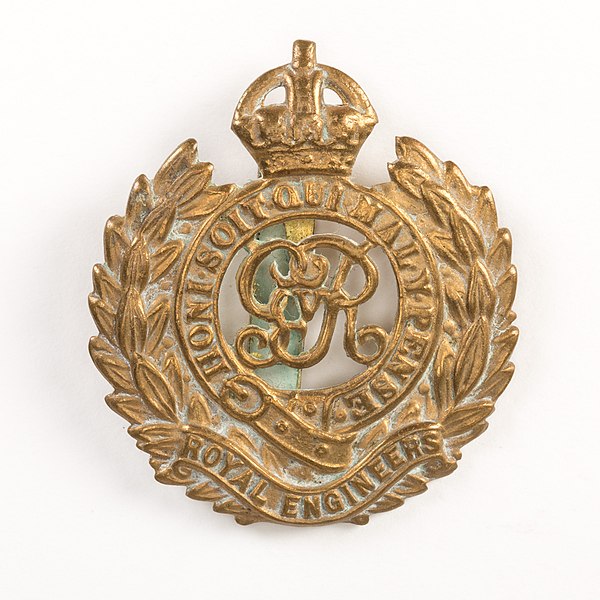The Surrey Yeomanry was a unit of the British Army first formed as volunteer cavalry in 1794. It was reformed in 1901 and saw varied service in the First World War. During the interwar period, it converted to artillery and during the Second World War one of its regiments distinguished itself during the retreat to Dunkirk, saw action during the Second Battle of El Alamein, and also saw service in Sicily and Italy. Its other regiment served in East Africa, the Siege of Tobruk, and in Iraq and Persia. The regiment's lineage is maintained today by 2 Field Troop, 579 Field Squadron (EOD), part of 101 (London) Engineer Regiment (Volunteers).
Painting by Thomas Rowlandson of a Southwark Volunteer Cavalryman ca 1798.
The TA Centre in Kings Avenue, Clapham, as rebuilt with the Surrey Yeomanry badge and '298 Field Regiment RA' inscribed over the doorway.
A patrol of C Sqn 1/1st Surrey Yeomanry passing through the ruined village of Caulaincourt during the German retreat to the Hindenburg Line, March 1917.
Memorial to the Surrey Yeomanry dead of WWI and WWII, inside Guildford Cathedral. Photo 2009.
Cinque Ports Fortress Royal Engineers
The Cinque Ports Fortress Royal Engineers was a volunteer unit of Britain's Royal Engineers
serving in the defences of Dover, one of the historic Cinque Ports. It provided detachments for field service in World War I and World War II, when they saw active service in Tunisia, Italy and Greece. Its lineal descendant continues to serve in the present day Army Reserve as a bomb disposal unit.
RE Cap badge (King George V cipher)





